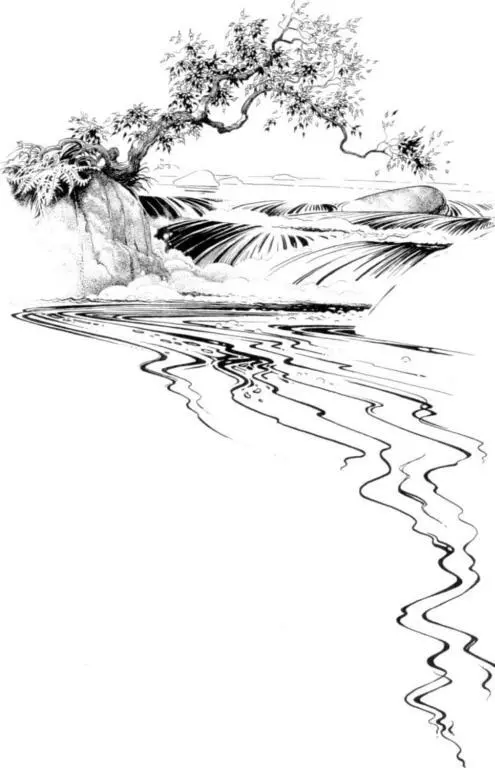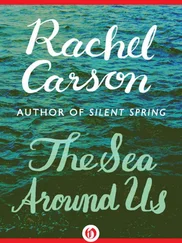Despite the competition of a constant stream of new chemicals issuing from the laboratories, arsenic compounds are still liberally used, both as insecticides (as mentioned above) and as weed killers, where they usually take the chemical form of sodium arsenite. The history of their use is not reassuring. As roadside sprays, they have cost many a farmer his cow and killed uncounted numbers of wild creatures. As aquatic weed killers in lakes and reservoirs they have made public waters unsuitable for drinking or even for swimming. As a spray applied to potato fields to destroy the vines they have taken a toll of human and nonhuman life.
In England this latter practice developed about 1951 as a result of a shortage of sulfuric acid, formerly used to burn off the potato vines. The Ministry of Agriculture considered it necessary to give warning of the hazard of going into the arsenic-sprayed fields, but the warning was not understood by the cattle (nor, we must assume, by the wild animals and birds) and reports of cattle poisoned by the arsenic sprays came with monotonous regularity. When death came also to a farmer’s wife through arsenic-contaminated water, one of the major English chemical companies (in 1959) stopped production of arsenical sprays and called in supplies already in the hands of dealers, and shortly thereafter the Ministry of Agriculture announced that because of high risks to people and cattle restrictions on the use of arsenites would be imposed. In 1961, the Australian government announced a similar ban. No such restrictions impede the use of these poisons in the United States, however.
Some of the “dinitro” compounds are also used as herbicides. They are rated as among the most dangerous materials of this type in use in the United States. Dinitrophenol is a strong metabolic stimulant. For this reason it was at one time used as a reducing drug, but the margin between the slimming dose and that required to poison or kill was slight—so slight that several patients died and many suffered permanent injury before use of the drug was finally halted.
A related chemical, pentachlorophenol, sometimes known as “penta,” is used as a weed killer as well as an insecticide, often being sprayed along railroad tracks and in waste areas. Penta is extremely toxic to a wide variety of organisms from bacteria to man. Like the dinitros, it interferes, often fatally, with the body’s source of energy, so that the affected organism almost literally burns itself up. Its fearful power is illustrated in a fatal accident recently reported by the California Department of Health. A tank truck driver was preparing a cotton defoliant by mixing diesel oil with pentachlorophenol. As he was drawing the concentrated chemical out of a drum, the spigot accidentally toppled back. He reached in with his bare hand to regain the spigot. Although he washed immediately, he became acutely ill and died the next day.
While the results of weed killers such as sodium arsenite or the phenols are grossly obvious, some other herbicides are more insidious in their effects. For example, the now famous cranberry-weed-killer aminotriazole, or amitrol, is rated as having relatively low toxicity. But in the long run its tendency to cause malignant tumors of the thyroid may be far more significant for wildlife and perhaps also for man.
Among the herbicides are some that are classified as “mutagens,” or agents capable of modifying the genes, the materials of heredity. We are rightly appalled by the genetic effects of radiation; how then, can we be indifferent to the same effect in chemicals that we disseminate widely in our environment?
4. Surface Waters and Underground Seas

OF ALL our natural resources water has become the most precious. By far the greater part of the earth’s surface is covered by its enveloping seas, yet in the midst of this plenty we are in want. By a strange paradox, most of the earth’s abundant water is not usable for agriculture, industry, or human consumption because of its heavy load of sea salts, and so most of the world’s population is either experiencing or is threatened with critical shortages. In an age when man has forgotten his origins and is blind even to his most essential needs for survival, water along with other resources has become the victim of his indifference.
The problem of water pollution by pesticides can be understood only in context, as part of the whole to which it belongs—the pollution of the total environment of mankind. The pollution entering our waterways comes from many sources: radioactive wastes from reactors, laboratories, and hospitals; fallout from nuclear explosions; domestic wastes from cities and towns; chemical wastes from factories. To these is added a new kind of fallout—the chemical sprays applied to croplands and gardens, forests and fields. Many of the chemical agents in this alarming mélange imitate and augment the harmful effects of radiation, and within the groups of chemicals themselves there are sinister and little-understood interactions, transformations, and summations of effect.
Ever since chemists began to manufacture substances that nature never invented, the problems of water purification have become complex and the danger to users of water has increased. As we have seen, the production of these synthetic chemicals in large volume began in the 1940s. It has now reached such proportions that an appalling deluge of chemical pollution is daily poured into the nation’s waterways. When inextricably mixed with domestic and other wastes discharged into the same water, these chemicals sometimes defy detection by the methods in ordinary use by purification plants. Most of them are so stable that they cannot be broken down by ordinary processes. Often they cannot even be identified. In rivers, a really incredible variety of pollutants combine to produce deposits that the sanitary engineers can only despairingly refer to as “gunk.” Professor Rolf Eliassen of the Massachusetts Institute of Technology testified before a congressional committee to the impossibility of predicting the composite effect of these chemicals, or of identifying the organic matter resulting from the mixture. “We don’t begin to know what that is,” said Professor Eliassen. “What is the effect on the people? We don’t know.”
To an ever-increasing degree, chemicals used for the control of insects, rodents, or unwanted vegetation contribute to these organic pollutants. Some are deliberately applied to bodies of water to destroy plants, insect larvae, or undesired fishes. Some come from forest spraying that may blanket two or three million acres of a single state with spray directed against a single insect pest—spray that falls directly into streams or that drips down through the leafy canopy to the forest floor, there to become part of the slow movement of seeping moisture beginning its long journey to the sea. Probably the bulk of such contaminants are the waterborne residues of the millions of pounds of agricultural chemicals that have been applied to farmlands for insect or rodent control and have been leached out of the ground by rains to become part of the universal seaward movement of water.
Here and there we have dramatic evidence of the presence of these chemicals in our streams and even in public water supplies. For example, a sample of drinking water from an orchard area in Pennsylvania, when tested on fish in a laboratory, contained enough insecticide to kill all of the test fish in only four hours. Water from a stream draining sprayed cotton fields remained lethal to fishes even after it had passed through a purifying plant, and in fifteen streams tributary to the Tennessee River in Alabama the runoff from fields treated with toxaphene, a chlorinated hydrocarbon, killed all the fish inhabiting the streams. Two of these streams were sources of municipal water supply. Yet for a week after the application of the insecticide the water remained poisonous, a fact attested by the daily deaths of goldfish suspended in cages downstream.
Читать дальше













